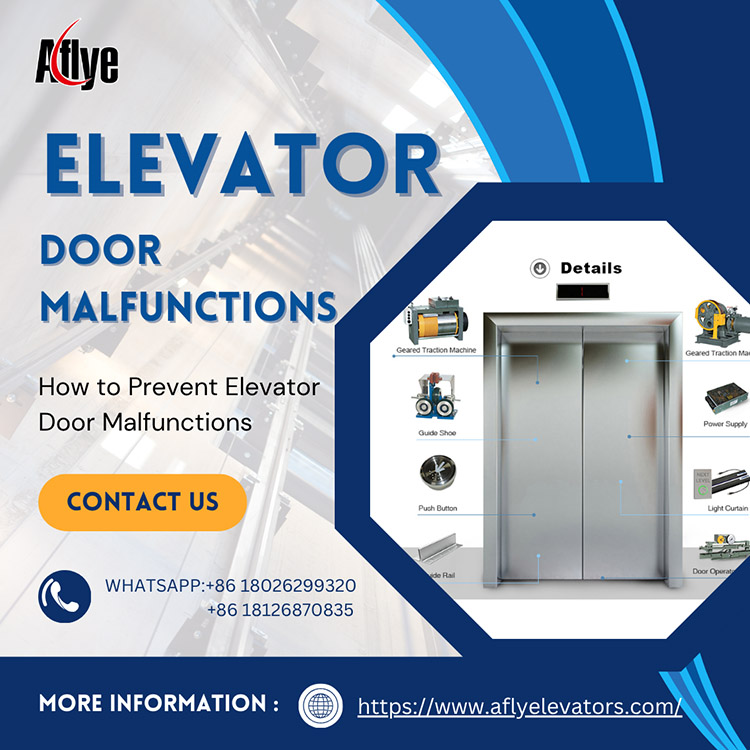How to Prevent Elevator Door Malfunctions?
In an elevator system, the elevator door operates with extremely high frequency and is one of the most failure-prone components. From frequent opening and closing actions to complex signal transmissions and mechanical linkages, every detail affects the elevator’s safety and performance. The most effective way to reduce elevator door failures is proactive prevention. As a professional elevator and escalator parts supplier, A-FLY shares how proper maintenance and quality components can prevent elevator door issues.

1. Regular Cleaning and Lubrication — Minimize Wear from the Source
During operation, elevator doors are exposed to dust, oil, and debris. Contaminants in the door track, rollers, or guiding parts can lead to poor movement or abnormal noise.
Preventive Measures:
Regularly clean the door track and elevator hanger roller surfaces to ensure smooth sliding.
Apply professional lubricant to guide shoes and hinge points to reduce friction.
Avoid high-viscosity oils that attract dust.
A-FLY elevator hanger rollers and guide components are made from high-durability materials, offering smooth operation, low noise, and extended lifespan.
2. Check Electrical Systems Regularly — Prevent Signal Failures
The opening and closing of elevator doors depend on electrical components such as the door operator controller and door light curtain. Unstable voltage or distorted signals can cause repeated opening and closing or failure to close.
Preventive Measures:
Test the door operator control signals quarterly for stability.
Clean the light curtain sensors to prevent dust interference.
Replace aging control boards with A-FLY elevator door operator parts, known for strong compatibility and precise performance.
3. Monitor the Door Operator Mechanism — Prevent Mechanical Aging
The door operator is the heart of the door system, responsible for motor control, limit sensing, and speed regulation. Worn gears, loose chains, or aging motors can slow down door movement or cause jamming.
Preventive Measures:
Listen for unusual “squeaking” sounds during operation.
Check the chain tension and gear wear.
Replace aging components such as A-FLY door operator drive chains or door motor assemblies to restore smooth function.
4. Maintain Light Curtain Sensitivity — Protect Passenger Safety
Modern elevators use infrared light curtains to detect passengers entering or exiting. Reduced sensitivity or signal errors may cause the door to close even when someone is in the doorway — a serious safety hazard.
Preventive Measures:
Clean the sensor lenses regularly to remove dust.
Inspect terminal connections for looseness or oxidation.
If light curtain issues occur frequently, replace them with A-FLY infrared elevator light curtains, compatible with most global elevator systems.
5. Choose High-Quality Parts — Prevent Failures at the Source
Many elevator door problems result from inferior or incompatible components. Using reliable, high-quality parts is key to long-term stability.
A-FLY, a global supplier of elevator and escalator parts, provides premium elevator door rollers, door locks, door sensors, and door operator systems, all tested to meet rigorous quality standards for durability and consistency.
Conclusion: Prevention Is Better Than Repair — Safety Starts with Details
Smooth elevator door operation depends on regular maintenance and high-quality components. With consistent care, electrical inspections, and durable A-FLY parts, you can significantly reduce malfunction risks while improving safety and passenger comfort.
Choose A-FLY — for quieter, smoother, and safer elevator door performance. That’s our lasting commitment.

